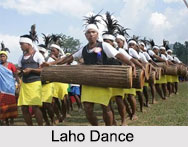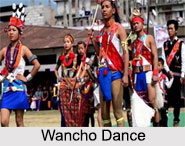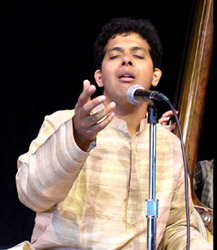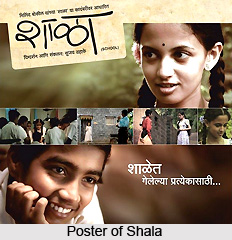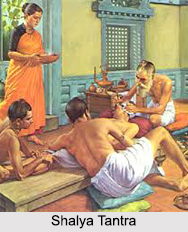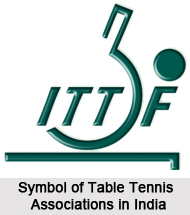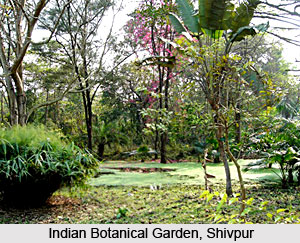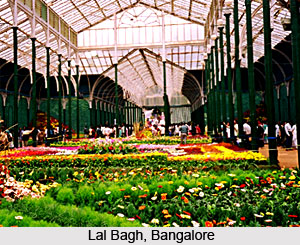A trip to Goa is a dream come true for tourist. Lying in the west coast of India, it possesses a perpetual charm. Also known as the 'pearl of the east', Goa is well known for its Gothic churches, temples, historical monuments, palm-fringed beaches, coconut orchards, ferry rides and vivacious folk music. Goa's matchlessness lies in the fact that while creating an elusive amalgamation of motley of cultures, it has maintained its innate essence. Goa is surely a land of dreams and romanticism, an eternal world of gentle, generous people and leisurely activity. It is in true sense a lush green paradise. With the promises of the shimmering beaches, azure waters and with the kiss of the sun and palms, Goa is a tourist destination throughout the year. This tiny state is situated on the west coast of India, between the borders of Maharashtra and Karnataka. It is better identified to the world as the former Portuguese enclave on Indian soil.
Pilgrimage Tourism in GoaBeing a state of miscellaneous religious populations, Goa is home to many places of worship that draw tourists from all over the world. Churches, temples and other religious places have made Goa one of the most visited destinations of the world. Religious places in Goa have a soul, which plunges deep into its unique history and rich culture.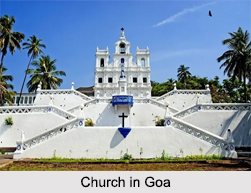 Churches: The Churches in Goa are a memento of its age old custom and even the bits and pieces of its celebrated past. With a significant population of Goans being Christians for many generations today, the Church is a significant factor in Goa's social, cultural and religious life. Inhabited mostly by Christians the Churches in Goa are not only an instance of architectural spectacle but even replicate the traditions of the simple Goan people. Se Cathedral of Goa is one of the largest in Asia. Religious pilgrims are enthralled to hear of the Cross of Miracles, which is placed in the cathedral. This cathedral in Goa is a must see religious center for the pilgrimage tourists. The church of St. Anne is another popular destination for the Christians who come from all over the world to offer their prayer here. The Basilica of Bom Jesus located in old Goa is of great religious significance. It is a World Heritage Monument in India. The church is renowned all over the world for the preserved mortal remains of St. Francis Xavier. He was the member of Society of Jesus and came to India to spread Christianity with the Portuguese. Every year thousands of people visit the cathedral especially in the month of December.Temples: Hindus also form a considerable part of the population in Goa. There are many temples which are of utmost religious importance. Sri Mangueshi temple at Ponda in Goa is the most well-known among temples. It is one of the most visited religious centers of the Hindus. Shri Mahalakshmi temple at Bandora is regarded as the dwelling place of the original Goddess of the Shakti cult. Its significance lies in the fact that it was the first Hindu temple to be built in this Indian state.Mosques: Though there is very little Muslim population in Goa but there are many well-known places of worship for them. There are around 26 mosques which are scattered all over the state of Goa. The Jama Masjid and the Safa Shahouri Masjid are two of the most famous mosques in Goa. These mosques hold great religious significance for the Muslim pilgrims.Nature Tourism in GoaGoa is a nature lover's dream destination. Visitors holidaying in Goa will take pleasure in the large assortment of water falls, parks, and popular wildlife sanctuaries.Waterfalls: Goa is a luxuriant natural bliss bounded on the one side by the foothills of the Sahyadri range and on the other side by the Arabian Sea. Goa is gifted with lakes, waterfalls and springs of matchless exquisiteness. They are situated far from the hustle and bustle, away from the coast, in the interiors. There are three major waterfalls of Goa which emerge from great heights and flow through the uneven terrains. These three rippling streams of silvery water draw innumerable tourists who desire idyllic solitude of secluded nature. The Arvalem waterfall of Goa looks stunning with the roaring cascade of water gushing down the rocky topography of the mountain behind it. The Dudhsagar Falls is one of the most interesting falls of India and the largest and highest fall of Goa. It is a lucrative tourist haunt. The Kesarval waterfall is another magnificent spectacle for the nature lovers. Lakes in Goa are also a must visited destination for the tourists.
Churches: The Churches in Goa are a memento of its age old custom and even the bits and pieces of its celebrated past. With a significant population of Goans being Christians for many generations today, the Church is a significant factor in Goa's social, cultural and religious life. Inhabited mostly by Christians the Churches in Goa are not only an instance of architectural spectacle but even replicate the traditions of the simple Goan people. Se Cathedral of Goa is one of the largest in Asia. Religious pilgrims are enthralled to hear of the Cross of Miracles, which is placed in the cathedral. This cathedral in Goa is a must see religious center for the pilgrimage tourists. The church of St. Anne is another popular destination for the Christians who come from all over the world to offer their prayer here. The Basilica of Bom Jesus located in old Goa is of great religious significance. It is a World Heritage Monument in India. The church is renowned all over the world for the preserved mortal remains of St. Francis Xavier. He was the member of Society of Jesus and came to India to spread Christianity with the Portuguese. Every year thousands of people visit the cathedral especially in the month of December.Temples: Hindus also form a considerable part of the population in Goa. There are many temples which are of utmost religious importance. Sri Mangueshi temple at Ponda in Goa is the most well-known among temples. It is one of the most visited religious centers of the Hindus. Shri Mahalakshmi temple at Bandora is regarded as the dwelling place of the original Goddess of the Shakti cult. Its significance lies in the fact that it was the first Hindu temple to be built in this Indian state.Mosques: Though there is very little Muslim population in Goa but there are many well-known places of worship for them. There are around 26 mosques which are scattered all over the state of Goa. The Jama Masjid and the Safa Shahouri Masjid are two of the most famous mosques in Goa. These mosques hold great religious significance for the Muslim pilgrims.Nature Tourism in GoaGoa is a nature lover's dream destination. Visitors holidaying in Goa will take pleasure in the large assortment of water falls, parks, and popular wildlife sanctuaries.Waterfalls: Goa is a luxuriant natural bliss bounded on the one side by the foothills of the Sahyadri range and on the other side by the Arabian Sea. Goa is gifted with lakes, waterfalls and springs of matchless exquisiteness. They are situated far from the hustle and bustle, away from the coast, in the interiors. There are three major waterfalls of Goa which emerge from great heights and flow through the uneven terrains. These three rippling streams of silvery water draw innumerable tourists who desire idyllic solitude of secluded nature. The Arvalem waterfall of Goa looks stunning with the roaring cascade of water gushing down the rocky topography of the mountain behind it. The Dudhsagar Falls is one of the most interesting falls of India and the largest and highest fall of Goa. It is a lucrative tourist haunt. The Kesarval waterfall is another magnificent spectacle for the nature lovers. Lakes in Goa are also a must visited destination for the tourists.
For more, visit the link below:
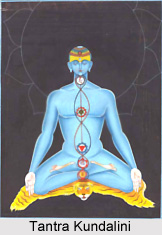 In human beings, Shakti, the female aspect is called "Kundalini". This is the vital energy that rests at the base of the spinal cord. The Yoga Upanishads describe Kundalini as lying "coiled" at the base of the spine, represented as either a goddess or sleeping serpent waiting to be awakened. The object of Tantric practice of Kundalini Yoga is to awaken the cosmic energy and make it ascend through the psychic centers, the charkas that lie along the axis of the spine as consciousness potentials. The female Shakti then again unites above the crown of the head with Shiva, the pure consciousness. This union aims at Kundalini Yoga. Thus duality turns into unity and fusion with the absolute takes place. By this union the Sadhaka or the worshipper attains liberation, which is considered as the highest experience: a union of human life with the Universe. Once Kundalini Shakti has ascended to above the crown of the head and merged with Shiva, it is made to reverse its course and return to rest at the base of the spine.
In human beings, Shakti, the female aspect is called "Kundalini". This is the vital energy that rests at the base of the spinal cord. The Yoga Upanishads describe Kundalini as lying "coiled" at the base of the spine, represented as either a goddess or sleeping serpent waiting to be awakened. The object of Tantric practice of Kundalini Yoga is to awaken the cosmic energy and make it ascend through the psychic centers, the charkas that lie along the axis of the spine as consciousness potentials. The female Shakti then again unites above the crown of the head with Shiva, the pure consciousness. This union aims at Kundalini Yoga. Thus duality turns into unity and fusion with the absolute takes place. By this union the Sadhaka or the worshipper attains liberation, which is considered as the highest experience: a union of human life with the Universe. Once Kundalini Shakti has ascended to above the crown of the head and merged with Shiva, it is made to reverse its course and return to rest at the base of the spine.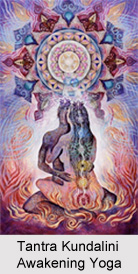 The aspects are Shiva and Shakti. Shiva, the masculine part retains a static quality and remains identified as long as the consciousness is not manifested. Shiva has the power to be but not the power to change the world. The other aspect of the power is Shakti, which is feminine, dynamic, energetic and creative. Shakti is the Great Mother of Universe, from which all the other creatures are born.
The aspects are Shiva and Shakti. Shiva, the masculine part retains a static quality and remains identified as long as the consciousness is not manifested. Shiva has the power to be but not the power to change the world. The other aspect of the power is Shakti, which is feminine, dynamic, energetic and creative. Shakti is the Great Mother of Universe, from which all the other creatures are born.